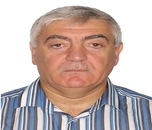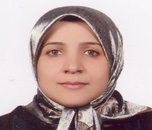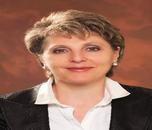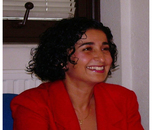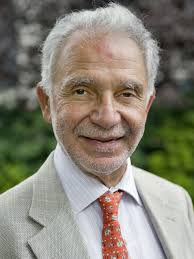Theme:
Tissue 2018

Conference Series extends warm invitation to all the participants across the globe to attend 9th International Conference & Exhibition on Tissue Science & Regenerative Medicine during April 23-24, 2018 in Las Vegas, USA which includes prompt keynote presentations, Oral talks, Poster presentations and Exhibitions.
Regenerative Medicine 2018 is an unprecedented event designed for international medical health professionals and tissue scientists to facilitate the propagation and application of research findings related to the science of regeneration and all the associated research areas. The conference invites participants from universities, clinical research institutions and pharmaceutical companies to share their research experiences on all aspects of this rapidly expanding field and thereby, providing a showcase of the latest techniques.
Conference series organizes a conference series of 1000+ Global Events inclusive of 300+ Conferences, 500+ Upcoming and Previous Symposiums and Workshops in USA, Europe & Asia with support from 1000 more scientific societies and publishes 700+ Open access journals which contain over 30000 eminent personalities, reputed scientists as editorial board members.
Reasons to Attend
Edifying public with recent advances in tissue science and all the associated research areas from around the world, this is your single best opportunity to reach the largest congregation of participants. World-renowned speakers, the most recent techniques and the newest updates in Tissue science and all the associated research areas are pledges of this conference. Conferences, National symposium and Workshops provide a steadfast forum for the advancement, execution and exchange of information about the research done in the labs.
Who Can Attend?
Ø Tissue scientists
Ø Doctors
Ø Prosthetic surgeons
Ø Academicians
Ø Academic scientists
Ø Oncologist
Ø Industry professionals
Ø Diagnostic laboratory professionals
Ø Postgraduate students
Ø Postdoctoral fellows and Trainees
Ø Stem cell researchers.
Importance and Scope
With increase in the demand of organs and lack of supply of the same, scientists have been propelled to research more upon the science of regeneration so that this bridge between demand and supply is gapped. Tissue regeneration is a well-known phenomenon. This natural event has been utilized for regenerating lost parts of human being. Many advances have been taking place. With advent of regenerative medicine, the scenario has changed a lot. More over nanotechnology has added new dimension to the field of tissue engineering. Bio-printing of organs are also now possible with definite accuracy. These novel techniques can help mass to overcome the problems of lost organs. Many diseases can be cured. Regenerative Medicine 2018 aims to spread the inventions taking place inside the lab among more people. This will enable scientists to find answers they have been searching for. The business entrepreneurs can bring it to the market and the students can get inspired to learn more and work towards benefit of mankind. Today the market analysis of this field indicates that Government, private institutes and many others are investing more in this field as this has assuring future. The industrial output from the scientific developments in this filed are promising.
Track 1: Tissue Regeneration
Many of us might have observed that the tail of a lizard, if cut, can grow efficiently all over again. This is an example of tissue regeneration. Like lizards, in many other animals including humans tissue regrowth can be observed. By definition it means regrowth of damaged or affected tissue from rest of the part. The initial step is rearrangement of pre-existing tissue followed by de-differentiation and trans-differentiation of the cells. This involves cells called stem cells which have the potential to regenerate themselves. There are intrinsic signals that activate stem cells to undergo regeneration when needed. There are amazing instances of tissue regeneration, for example heart regeneration in zebra fish. In humans, liver cells can regenerate themselves. But there are many cells and tissue that lack this ability. To help humans fight tissue damages in a better way tissue regeneration needs immediate attention. Researchers across the globe should come together to unleash the mystery of the signals and genetics that trigger regeneration in some tissues.
i. Animal models of tissue regeneration
ii. Molecular fundamentals of regeneration
iii. Intrinsic Tissue regeneration
iv. Guided Tissue Regeneration
v. Human tissue regeneration: Challenges in in-vivo and in-vitro regeneration
vi. In silico Tissue engineering
Related Conferences: Tissue Science Conferences | Regenerative Medicine Conferences | Tissue Engineering Conferences:
6th International Conference on Integrative Biology, May 21-23, 2018 Barcelona, Spain; 4th International Conference on Synthetic Biology and Tissue Engineering, June 11-12, 2018 Rome, Italy; 4th International Conference on Bioscience, July 2-3, 2018 Vienna, Austria; 8th World Congress on Plant Science & Genomics, July 9-10, 2018 Sydney, Australia.
Track 2: Scaffolds and Matrix for Tissue regeneration
In native state, majority of the cells (except the red blood cells) in our body are anchorage dependent and remain attached to a rigid support called extracellular matrix (ECM). It plays a key role in providing structural support to the cells and adds to the mechanical properties of tissues. It also helps the cells respond to the signals of micro-environment. Due to highly dynamic properties of ECM, it cannot be mimicked. But, scientists have developed biomaterials and biopolymers that can act as ECM and serve the similar functions in engineered tissues. The biomaterials should have some features like bioactivity, porosity, bio-compatibility etc. There are four scaffolding approaches as of now: 1) Pre-made porous scaffolds for cell seeding 2) Decellularized extracellular matrix for cell seeding 3) Confluent cells with secreted extracellular matrix 4) Confluent cells with secreted extracellular matrix. Preparation of scaffolds is a challenging task. Various approaches are Nano-fiber self-assembly, Solvent casting and particulate leaching, Gas foaming, Laser-assisted bio printing etc..
i. Cell seeding
ii. Hydrogels
iii. Cell encapsulation and microencapsulation
iv. Biopolymers
v. Biomaterials.
vi. Cell sheets
Related Conferences: Tissue Science Conferences | Regenerative Medicine Conferences | Tissue Engineering Conferences:
Drug delivery & tissue engineering conference, Singapore, 04 - 08 February 2018; Global Summit on Stem Cell & Tissue Engineering, July 23-24, 2018 at Barcelona, Spain.
Track 3: Stem Cells: Culture, Differentiation and Transplantation
Stem Cells are undifferentiated cells that have the potency to regenerate and differentiate into cells of specific lineage. They are classified as oligopotent, pluripotent, totipotent cells based on the different types of cells formed after differentiation. The broader classification includes embryonic stem cells and adult stem cells. Mesenchymal stem cell (MSC) is a variant of adult stem cell that gives rise to osteoblast, adipocytes and chondrocytes. MSC transplantation for tissue engineering has grabbed attention due to its immunosuppressive features. It is now in use to regenerate tissues of kidney, liver, heart, bone etc. Stem cell culture forms the base for the tissue engineering approach. A minor change in the culture environment may lead to altered potency of the cells. So special reagents and media are required. Moreover, 3D culture techniques and CRISPR genome editing technology are also in market.
i. Cancer Stem Cells
ii. Mesenchymal Stem Cells
iii. Stem Cell Therapy
iv. Induced Pluripotent Stem cells (IPSC)
Related Conferences: Tissue Science Conferences | Regenerative Medicine Conferences | Tissue Engineering Conferences:
8th World Congress on Plant Genomics and Agricultural Sciences August 20-21, 2018 Tokyo, Japan; 3D-Bioprinting, Tissue Engineering & Bio fabrication; 26 March -27 March 2018;Boston, USA; 9th International conference on Tissue Engineering and Regenerative Medicine, November 9 to 10 2018, Atlanta, USA.
Track 4: Grafts In Tissue Engineering
Grafts are the parts of tissue that have been transplanted via surgical methods. Diverse types of grafting include skin grafting, bone grafting, vascular grafting and ligament repair. Skin grafting is a commonly used grafting technique. Wounds, burns and scars have been dealt with this efficiently. Skin cancer also finds its remedy with skin transplantation. Bone transplantation is a bit difficult but well-known process to replace bone damages. In Recent years cardiovascular disease are being combatted with the development of a tissue-engineered vascular graft (TEVG). The various approaches to generate TEVGs are scaffold-based methods and tissue self-assembly processes. The channels for vascular grafting are autologous arteries or veins. Synthetic vascular grafts are also available in the market nowadays.
i. Wound healing and repair
ii. Bone replacement
iii. Cartilage replacement
iv. Hip replacement
Related Association: Netherlands Society For Biomaterials and Tissue Engineering, Swiss Society for Biomaterials + Regenerative medicine, Biomaterials and Tissue Engineering Society, UK Society For Biomaterials, Scandinavian Society for Biomaterials, TERMIS-EU (formerly European Tissue Engineering Society).
Track 5: Advent of Microfluidics
Scaffolds are important part of tissue engineering. For a material to be certified as biomaterial of interest we need to test its bio-compatibility and cytotoxicity. Traditional methods are time consuming and do not offer in vivo conditions. A recent technology called Microfluidic technology allows to study cells in in-vivo condition with control of the fluid supply. Micro and sub-micrometer microfluidic channels are developed in patterns that control the flow, mixing of solutions and supply of nutrients. Another approach is developing a lithographic technique to manufacture microfluidic structures enclosed in a calcium alginate hydrogel seeded with cells.
Related Association: Chinese Society for Biomaterials, China, Polish Society for Biomaterials, Poland, German Society for Biomaterials, Germany, Italian Society for Biomaterials, Italy
Track 6: Regenerative Medicine: A Renaissance
Many people crave for organs at times of crisis. Lucky are those who get it on time. But the shortage of organ has been a recurrent problem throughout the world. In order to combat this problem, the concept of regenerative medicine has arrived. Regenerative medicine, by definition, means engineering cells, tissues and organs to restore normalcy. The biomedical approaches in this field are administering bio-active molecules that will trigger regeneration, immunomodulation therapy, transplantation of organs grown in vitro etc.
i. Transplantation
ii. Bio-artificial organs
iii. Progenitor stem cells
iv. Three-dimensional (3D) printing
v. Cell Therapy
Related Conferences: Tissue Science Conferences | Regenerative Medicine Conferences | Tissue Engineering Conferences:
9th International Conference on Tissue Engineering and Regenerative Medicine November 9-10, 2018 Atlanta, USA
Track 7: Medical Implants and Prosthetics
To restore damaged parts, certain devices or tissues are implanted inside or on the surface of the patient. These are called medical implants. These also include prosthetics which mean artificial body parts. Others have function like monitoring body functions, delivering medication or providing support to organs and tissues. Some implants are derived from body parts while others are fabricated using metals and alloys. These can be incorporated permanently or may be removed after certain time. Surgical implants have enough risks. They may induce allergies, swelling or other immunological problems. They may have chances to break and even cause internal damage. More research is being carried on to reduce the risk and use them for benefits.
i. Orthopedics
ii. Breast implants
iii. Dental implants
iv. Cosmetic implants
v. Contraceptive implants
vi. Sensory and neurological implants
Related Conferences: Tissue Science Conferences | Regenerative Medicine Conferences | Tissue Engineering Conferences:
8th World Congress on Plant Science & Genomics July 9-10, 2018 Sydney, Australia; 6th International Conference on Integrative Biology May 21-23, 2018 Barcelona, Spain; 11th World Congress on Cell & Tissue Science May 14-15, 2018 Tokyo, Japan; 12th Edition of International Conference on Tissue Engineering and Regenerative Medicine May 10-11, 2018 Frankfurt, Germany
Track 8: Drug Delivery And Tissue Engineering
Drug delivery has received attention in the recent years because in most cases the drugs do not reach the target organs and fail to deliver the therapeutic action. So, several ways of drug delivery are being researched upon. Apart from traditional methods of drug delivery, there are several other methods like liposomes-mediated, microspheres-encapsulated, gels etc. Nano-encapsulated drug delivery is also receiving attention due to slow release, biocompatibility, target-oriented features etc. Tissue engineering relies on the use of scaffolds. For tissue regeneration growth factors are required. The delivery of these factors determines the success of the process. To address this, various drug delivery routes are researched upon and applied in tissue engineering techniques.
i. Controlled Release of drugs
ii. Growth Factor
Related Conferences: Tissue Science Conferences | Regenerative Medicine Conferences | Tissue Engineering Conferences:
2nd International Conference on Tissue Repair, Regeneration, and Fibrosis, Crete, Greece; Cell Death, Inflammation and Adaptation to Tissue Stress (A6); January 21—25, 2018; Beaver Run Resort, Breckenridge, Colorado, USA;
Track 9: Gene Therapy In Relation to Tissue Science
Gene therapy deals with gene incorporation to reverse the genetic error or cure it by replacing with normal gene. The gene delivery system are generally viral and non-viral vectors. There are some genes that code for bio-signal molecules to trigger the proliferation and differentiation of cells. These are supposed to play an important role in tissue engineering and induce tissue regeneration. Tissue regeneration with some plasmid DNAs of growth factor have cited their therapeutic ability. Advanced researches have reported about cationized gelatin microspheres that allowed the controlled release of plasmid DNA and has several advantages.
i. Viral and non-viral vectors
ii. In vivo gene therapy
iii. Ex vivo gene therapy
iv. Augmented gene therapy
v. Germline therapy
vi. Genetic engineering
vii. Somatic Gene therapy
viii. Recombinant Dna Technologies
ix. Immuno-therapy
Related Conferences: Tissue Science Conferences | Regenerative Medicine Conferences | Tissue Engineering Conferences:
One-Day Meeting on Bone and Enamel Tissue Science and Engineering;13 December 2017; 12th Edition of International Conference on Tissue Engineering and Regenerative Medicine; 10 May, 2018; International Conference on Biomaterials; August 16-18, 2018, London, UK
Track 10: Aesthetic Skin Rejuvenation
Aging is a natural and inevitable phenomenon. Skin loses its juvenile luster with age. Permanent pimples, wrinkles and texture irregularities are very common. With advent of cosmetic surgery this can be reversed. The process is generally based on layer by layer removal of the surface cells and the new cells are thus formed.
i. Cosmetic surgery
ii. Laser resurfacing of skin
iii. 3D skin rejuvenation
European Society for Biomaterials, Scandinavian Society for Biomaterials, Europe, Society for Biomaterials, USA, Society for Biomaterials and Artificial Organs, India, Society for Biomaterials, UK, Canadian Biomaterials Society, Canada
Track 11: Bio-Imaging
Biomedical imaging deals with capturing images for diagnostic and therapeutic purposes. Light (endoscopy, OCT), X-rays (CT scans), magnetism (MRI), radioactive pharmaceuticals (nuclear medicine: SPECT, PET) or sound (ultrasound) are the devices used to take snapshot of the current pathological condition of an organ or tissue. The need for biopsy has been eliminated with advent of optical molecular imaging technologies. Biomedical image processing includes the investigation, improvement and presentation of images captured via various imaging technologies.
i. Molecular biophysics
ii. Fluoroscence imaging
iii. Flow cytometry
iv. Biomedical imaging modalities and data acquisition
v. Image reconstruction
Related Conferences: Tissue Science Conferences | Regenerative Medicine Conferences | Tissue Engineering Conferences:
11th World Congress on Cell & Tissue Science May 14-15, 2018 Tokyo, Japan; ICTERMA 2018 :20th International Conference on Tissue Engineering and Regenerative Medicine Applications, Amsterdam, The Netherlands, May 10 - 11, 2018; Craniofacial Development and Disease: From Molecules to Patients, February 11 - 16, 2018.
Track 12: Biosensors
A hardware that interacts with a biological system to obtain a signal for diagnostic and therapeutic purposes is termed as a biosensor. Biomedical signal processing processes the data obtained using biosensors to be interpreted by us. Weak signals are generated by our body. They vary according to our pathological conditions. They can be captured by biosensors and calibrated with signals obtained under normal conditions. The difference will help us estimate the condition of the patient.
i. Biomedical Signal Processing
ii. Bio-robotics
iii. Diagnostic & Therapeutic Systems
iv. Tele-medicine
v. Wearable & Implantable Technologies
Related Conferences: Tissue Science Conferences | Regenerative Medicine Conferences | Tissue Engineering Conferences:
10th World Congress on Stem Cell and Bio-banking, October 23-24, 2017 Osaka, Japan; 10th World Congress and Expo on Cell & Stem Cell Research March 19-21, 2018 New York, USA; World Congress on Organ Transplantation and Artificial Organs April 23-24, 2018 Dubai, UAE; 12th Edition of International Conference on Tissue Engineering and Regenerative Medicine, May 10-11, 2018 Frankfurt, Germany
Track 13: Bio-printing
An alternative to scaffold-based approaches in tissue-engineering is organ printing. With tissue spheroids as building blocks, 3d functional living macro-tissues and organ constructs are fabricated layer by layer using bio-robots. Three steps involved in organ printing are development of digital image of actual organ (pre-processing), organ printing layer by layer in 3d environment (processing) and finally perfusion of the printed part and its maturation (post processing). Numerous studies have cited the importance of bio printing in generating 3d structure of tissues and organs and it has added another dimension to tissue engineering.
i. Tissue spheroid
ii. Bio-printer
iii. Future prospects
iv. Challenges
Related Conferences: Tissue Science Conferences | Regenerative Medicine Conferences | Tissue Engineering Conferences:
Global Summit on Stem Cell & Tissue Engineering; July 23-24, 2018 at Barcelona, Spain; DRUG DELIVERY & TISSUE ENGINEERING CONFERENCE, SINGAPORE; 04 - 08 FEBRUARY 2018; 3D-Bioprinting, Tissue Engineering & Biofabrication, 26 March -27 March 2018, Boston, USA.
Track 14: Osteoarthritis and Rheumatoid arthritis
Breakdown of joint cartilage and underlying bone causes Osteoarthritis (OA). The symptoms include joint pain, stiffness, joint swelling and decreased range of motion. With time, it affects joints of knees, hip and pelvic region. Rheumatoid arthritis (RA), on the other hand, is an autoimmune disorder that affects joints. It results in swelling of joints with intolerable pain. These diseases have been addressed with various approaches of tissue engineering and regenerative techniques. Positive results have been obtained.
i. Signs and symptoms
ii. Risk factors
iii. Pathophysiology
iv. Diagnosis
v. Prevention
vi. Management
vii. Prognosis
Related Conferences: Tissue Science Conferences | Regenerative Medicine Conferences | Tissue Engineering Conferences:
11th World Congress on Cell & Tissue Science May 14-15, 2018 Tokyo, Japan; 12th Edition of International Conference on Tissue Engineering and Regenerative Medicine, May 10-11, 2018 Frankfurt, Germany
Track 15: Tissue engineering and Cancer
Cancer is the most dreaded disorder. The exact cause and mechanism is yet not known. Diverse research is going on find an answer. Tissue engineering has been inter-related with cancer to find some ways. Using tissue engineering to comprehend cancer can be done by fabricating 3D constructs that will mimic tumor cells and help us know how cancer cell grow, spread and metastasize at the biological level. For testing drugs, 3D structures are more reliable. One approach has been to engineer tumors and understand mechanism of drugs administered on then in vitro. Tissue engineered cancer models can be used as test therapies.
Related Societies: Swiss Society for Biomaterials + Regenerative medicine, Switzerland , Biomaterials and Tissue Engineering Society, Turkey, Romanian Society for Biomaterials, Romania , The Hellenic Society for Biomaterials, Greece, Japanese Society for Biomaterials, Japan
Track 16: Nanotechnology in Tissue Engineering
Nanotechnology has wide spread applications. It can be used to fabricate biocompatible scaffolds at the nanoscale. This would control the release of biological factors, to regulate cell behaviors and finally lead to the creation of functional tissues. Biocompatible materials at Nano-scale can be used as medical implants for example bone substitutes and dental restoratives. ECM is a highly dynamic matrix. Nano-topographic patterns on ECM control response of the living cells. Substrates with varying nano-features are being engineered so that cell function due to topographic cues can be controlled.
i. Nanotechnology
ii. Nanomedicine
iii. Nanotopography
iv. Nanofabricated scaffolds
Related Conferences: Tissue Science Conferences | Regenerative Medicine Conferences | Tissue Engineering Conferences:
World Congress on Organ Transplantation and Artificial Organs, April 23-24, 2018 Dubai, UAE; 12th Edition of International Conference on Tissue Engineering and Regenerative Medicine, May 10-11, 2018 Frankfurt, Germany
Track17: Tissue Engineering In the World of Flora
With increasing success of animal tissue engineering, scientists are trying the techniques on plants. A very recent study reveals that Use of 3D scaffolds have helped in studying plant development. Nano-fiber scaffolds were expensive some days back. But with technique called shear spinning it has been rendered cost effective and hence can be used to experiment with plants. Reports have shown that by growing in the nano-fibres, they adopt dramatic change in their behavior. 3-D plant tissue engineering promises to provide a new array of techniques for studying plant growth and development in vitro. The agricultural sector will also be benefitted as synthetic biology can be researched upon.
Related association in USA: Society For Biomaterials, Canadian Biomaterials Society, The International Society of Biomedical Polymers and Polymeric Biomaterials (ISBPPB), World Biomaterials Congress, The American Institute for Medical and Biological Engineering (AIMBE), Tissue Engineering and Regenerative Medicine International Society.
Track 18: Legal and ethical Issues in Tissue Engineering
As every research should have a moral base, tissue engineering too stands on some code of ethics. As it entails use of body parts of living species, there are some ethical regulations that bind the researchers to think before making a leap. It entails “Right to integrity of a person”, “protection of personal data”, “solidarity”, “Private life and right to information” etc. Similarly there are some legal constraints on the research and application of tissue engineering. These ethical, legal and social implications of tissue science must be noted as they will form the foundation for the ultimate success of this engineering.
Related Associations: Australasian Society for Biomaterials and Tissue Engineering, Australia, The Korean Society for Biomaterials, Korea, Netherlands Society for Biomaterials and Tissue Engineering, Europe.
Introduction
Global tissue engineering market size is estimated to be around $60.8 billion by 2021 from $13.6 billion in 2016. Escalating need to bridge the gap of demand and lack of supply of organs is a strategic factor contributing to market growth of tissue science. Application of tissue engineering was initially restricted to surgical implantations and prosthetics. But now it includes cardiac, corneal, liver tissue engineering and regenerative medicine. For clinical trials and toxicity testing, animal models are used which have raised ethical and legal concerns. This necessitates the use of in-vitro testing. Tissue engineering gives the scope of using human equivalent models. An instance of this has been demonstrated by European Centre for the Validation of Alternative Methods to Animal Testing (ECVAM). They tend to use skin tissues instead of mice and rat models. But they still face challenges which need to be overcome. Industries are paying attention to the R&D of this sector. The Government bodies are strictly regulating the marketing of the therapies as many unproven products are coming up in the market. The field of regenerative medicine has expanded to cover from orthopedics to cancer. Increasing demand, technological advancements and research funding has helped in the market growth of this sector.

The Market Value
The market was dominated by orthopedic application during 2014 due to increasing number of reconstructive and replacement surgeries. The need for bone implants arises from the aging population and the increasing number of accidents. Tissue engineered devices efficiently fill the gap between the demand and the lack of supply of orthopedic products.
The presence of leading international players and US government support has helped flourish the market of tissue engineering in North America rendering it the highest position. Private investors play important roles too. The U.S. Department of Health and Human services state that USD 4 billion pounds have been invested in private capital for regenerative medicine. Initiated in 2006, the expanse of the market has seen dramatic rise. Proteus Fund in California is focusing on tissue engineering and aesthetic medicines. Industry and academic institutes are working hand in hand to render proper service to the mass. Cesca Therapeutics, Inc. and Center for Immune Cell Therapies (CICT) teamed up to investigate the application of AutoXpress platform for immune cell therapy in September 2015.
3D printing technology is in demand to lessen the cost and errors in tissue engineered scaffolds. Industry players are continuously working to enhance the present 3D technology and thereby rendering better organ and tissue printing. 3Dynamic Systems Ltd. (3DS) launched two new 3D printers named Omega and Alpha bio printers in September 2014. The company is currently fabricating bone and complex tissues by using the bio-printer.
Asia Pacific presents a wide opportunity for tissue engineering and regenerative medicines due to the presence of huge manpower, technology and government funding. In addition, increasing industry-academia alliances and acquisitions by international companies are expected to propel the demand for these therapies.
The demand for the human cells has also fuelled the interest of tycoons from the pharmaceutical industry. April 2015 witnessed Takeda Pharmaceutical Company Limited and Center for iPS Cell Research Application (CiRA) sign a ten-year collaborative research agreement. Through the academia-industry collaboration, both the parties will expand clinical applications, where they can use human pluriponent cells for heart failure. Moreover in December 2015, Pandorum Technologies Pvt., Ltd. manufactured its first 3D printed artificial human tissue. The artificial liver performs all the critical functions such as secretion, detoxification, and metabolism.
Some key industries in this sector include Medtronic, Inc., Zimmer Biomet, Acelity, Athersys, Inc., Organogenesis, Inc, Stryker Corporation, Tissue Regenix Group Plc and RTI surgical, Inc.

Tissue Science 2017 Report
6th International Conference on Tissue Engineering and Regenerative Medicine was organized during August 23-24, 2017 at San Francisco, USA. The conference was marked with the attendance of Editorial Board Members of supporting journals, Scientists, young and brilliant researchers, business delegates and talented student communities representing more than 25 countries, who made this conference fruitful and productive.
This conference was based on the theme “Importance of Tissue Engineering and Regenerative Medicine to the Future of Health Care” which included the following scientific tracks:
- Tissue Regeneration using Nanotechnology
- Tissue Repair and Regeneration
- Biological Tissue Substitutes
- Organ Engineering
- Trends in Tissue Engineering
- Bone Tissue Engineering
- Cell Culture & Bio Reactors
- Patient Specific Drug Discovery
- Tooth Regeneration
- Regenerative medicine
- Applications of Tissue Engineering
- Regenerative Medicine Market
- Embryonic Stem Cell
- Stem Cell Transplant
The Organizing Committee would like to thank the moderator Dr. Joel I Osorio (University of Californian Los Angeles, USA) and Dr. Seungil Ro for their contribution which resulted in smooth functioning of the conference.
The conference proceeded through various scientific sessions and plenary lectures, of which the following topics were highlighted as Keynote presentations:
Panayiotis Zavos -The Evolution and Current Status of Sperm Cryopreservation (The Andrology Institute of America, USA)
Heiko Zimmerman- Improved methods and procedures for pluripotent stem cell preservation, storage stability and validation (Fraunhofer Institute for Biomedical Engineering, Germany)
Aubrey de Grey- Cryopreservation of organs and organisms: Signs of a new era (SENS Research Foundation, USA)
Igor Katkov- Cryopreservation by Vitrification: Basic Thermodynamic Principals, Methods and Devices (Belgorod National Research University, Russia)
Ken Yaegaki- Transplantation of hepatocyte like cells derived from human tooth into the animals with liver conditions (Nippon Dental University School of Life Dentistry, Japan)
Charles F Mahl- Prolotherapy – The first choice in Regenerative Medicine (GenLife Institute for Regenerative Medicine and Stem Cells, USA)
Luiz C. Samapio - Maximizing Cardiac Repair: Should We Focus on Cells or Matrix?( Texas Heart Institute, USA)
Various sessions were chaired and co-chaired by: Panayiotis Zavos, The Andrology Institute of America, USA; Heiko Zimmerman, Fraunhofer Institute for Biomedical Engineering, Germany and
Debra Aub Webster, Cardinal Health Regulatory Sciences, USA; Ken Yaegaki, Nippon Dental University School of Life Dentistry, Japan
Conference Series LLC LTD has taken the privilege of felicitating Tissue Science 2017 Organizing Committee, Editorial Board Members and Keynote Speakers who supported for the success of this conference.
The esteemed guests, keynote speakers and researchers shared their innovative research and vast experience through their informative presentations at the podium of Tissue Science 2017. We are glad to inform that all accepted abstracts for the conference have been published in Journal of Tissue Science & engineering: Open Access as a special issue.
We are also obliged to various experts, company representatives and other eminent scientists who supported the conference by facilitating the discussion forums. We sincerely thank the Organizing Committee Members for their gracious presence, support, and assistance. With the unique feedback from the conference, Conferenceseries would like to proudly announce the commencement of the “9th International Conference on Tissue Engineering and Regenerative Medicine “to be organized during November 7-8, 2017 at Atlanta, USA.
Mark your calendars for the Upcoming Conference; We are hoping to see you soon!
For More details: https://regenerative.conferenceseries.com/
Conference Highlights
- Tissue Regeneration
- Scaffolds and Matrix for Tissue regeneration
- Stem Cells: Culture, Differentiation and Transplantation
- Grafts In Tissue Engineering
- Advent of Microfluidics
- Regenerative Medicine: A Renaissance
- Medical Implants and Prosthetics
- Drug Delivery And Tissue Engineering
- Gene Therapy In Relation to Tissue Science
- Aesthetic Skin Rejuvenation
- Bio-Imaging
- Biosensors
- Bio-printing
- Osteoarthritis and Rheumatoid arthritis
- Tissue engineering and Cancer
- Nanotechnology in Tissue Engineering
- Tissue Engineering In the World of Flora
- Legal and ethical Issues in Tissue Engineering
To share your views and research, please click here to register for the Conference.
To Collaborate Scientific Professionals around the World
| Conference Date | April 23-24, 2018 | ||
| Sponsors & Exhibitors |
|
||
| Speaker Opportunity Closed | Day 1 | Day 2 | |
| Poster Opportunity Closed | Click Here to View | ||
Useful Links
Special Issues
All accepted abstracts will be published in respective Our International Journals.
Abstracts will be provided with Digital Object Identifier by












